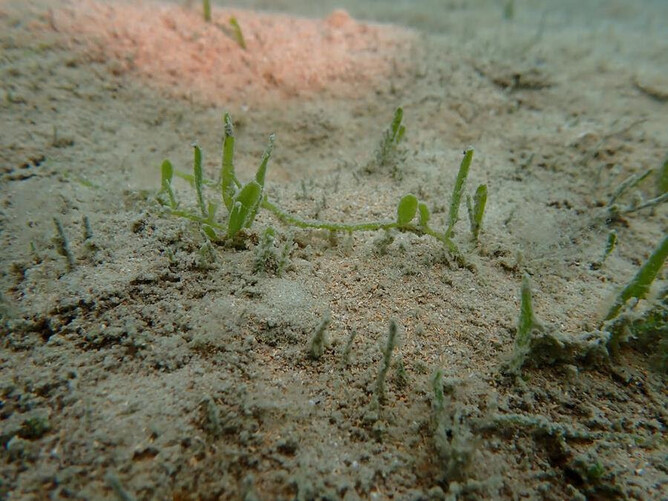Significant reduction in caulerpa cover confirmed
Since late 2024, NIWA (now Earth Sciences New Zealand (ESNZ)) has been researching biomass changes in exotic caulerpa. The scientists say these declines were mostly on soft, sandy seabed, while some caulcaulerpaotic caulerpa cover at some sites where it had previously been abundant.
That research is now complete, and the finalised report confirms significant reductions in the coverage of exotic caulerpa seaweed in some areas where there had been heavy infestation.
While these reductions are notable, scientific advice remains uncertain if this decline is a one-off event, whether exotic caulerpa will return or this is a more permanent reduction.
We asked NIWA to investigate following many reports from members of the public that the scale of exotic caulerpa had significantly reduced in some places. We wanted to verify this, understand the extent of what’s known as ‘biomass reduction’, and to gain insight into what might have caused any change.
Over November and December 2024, the scientists used a combination of diver field surveys, community observations, and environmental data analysis to investigate the situation.
Their report confirms that a significant reduction in exotic caulerpa biomass had occurred at two Aotea Great Barrier Island locations – Okupu Blind Bay and Schooner Bay. There had also been a significant reduction in the caulerpa population at Waiheke Island.
At some dive transects (the measured plots the divers surveyed) where coverage had been over 90 percent of the seabed, exotic caulerpa had reduced to less than 10 percent.
The scientists say these declines were mostly on soft, sandy seabed, while some caulerpa remained or increased on harder surfaces such as reef and artificial structures.
At the time of the NIWA investigation at the end of last year, no significant change was found in the caulerpa coverage in Tryphena Harbour at Aotea, or at Omakiwi Cove in the Bay of Islands.
After this, however, new reports came in that the caulerpa had also reduced at Tryphena, Great Barrier Island and Omakiwi Cove in Northland. Further NIWA dive investigations in May 2025 revealed significant reductions had also happened in those two places. These are captured in a second report.
The reductions at Omakiwi Cove have been caused by added sediment and resulting stress to the seaweed following Cyclone Tam in April. Most of the caulerpa there, particularly on soft sediment seabed, is completely covered in silt.
This is different to the situation being reported at Waiheke and Aotea.
The scientists have not identified a single factor that would explain the biomass reductions at Aotea and Waiheke, but they do indicate that the reduction is likely to have been caused by a combination of seasonal cycles causing changes in temperature, light and nutrient availability; and possibly reproductive cycles, storms and flooding.
The report recommends continued monitoring to build understanding of this and help inform future control work. This would include long-term monitoring programmes, further study of environmental and reproductive triggers and more research into how exotic caulerpa functions.
Read the full science reports - Evaluation of exotic caulerpa biomass reduction and Omakiwi Biomass Reduction Report.

